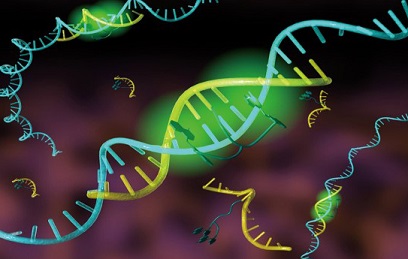Nikhil Prasad Fact checked by:Thailand Medical News Team Jun 21, 2024 1 year, 6 months, 1 week, 3 days, 5 hours, 11 minutes ago
Medical News: Intracerebral hemorrhage (ICH) is a severe type of stroke caused by bleeding within the brain, leading to devastating damage and high mortality rates. Traditional treatments have struggled to improve patient outcomes, but recent research by scientists from Taiwan that is covered in this
Medical News report, offers a new glimmer of hope. The Taiwanese scientists have discovered that a tiny molecule called microRNA-195-5p (miR-195-5p) might hold the key to reducing brain damage and improving recovery in ICH patients.
 miR-195-5p For Brain Hemorrhage Recovery
What is Intracerebral Hemorrhage?
miR-195-5p For Brain Hemorrhage Recovery
What is Intracerebral Hemorrhage?
ICH occurs when a blood vessel bursts in the brain, causing blood to leak into the surrounding brain tissue. This results in two types of injuries: primary injury from the initial bleeding and secondary injury caused by the body's response, including inflammation and brain swelling. Both types can lead to severe neurological damage, making it crucial to find effective treatments.
MicroRNAs: Tiny Molecules with Big Impact
MicroRNAs are small molecules that play a crucial role in regulating gene expression. They can turn genes on or off, affecting various cellular processes like growth, differentiation, and death. Scientists have been exploring microRNAs for their potential in treating diseases, including cancer and stroke.
The Role of miR-195-5p in Brain Hemorrhage
Recent studies have shown that miR-195-5p can significantly impact the brain's response to ICH. This molecule helps reduce brain damage by targeting and inhibiting specific enzymes called matrix metalloproteinases (MMPs). These enzymes, particularly MMP-9 and MMP-2, are known to exacerbate brain injury by breaking down the blood-brain barrier and promoting inflammation.
How miR-195-5p Works
Researchers conducted experiments on rats to understand how miR-195-5p affects ICH. They induced brain hemorrhage in the rats and treated them with miR-195-5p. The results were promising:
-Improved Motor Function: Rats treated with miR-195-5p showed significant improvement in motor skills, suggesting better recovery.
-Reduced Brain Swelling: The treatment decreased brain edema, a common and dangerous consequence of ICH.
-Restored Blood-Brain Barrier: miR-195-5p helped repair the blood-brain barrier, preventing harmful substances from entering the brain.
-Decreased Cell Death: The molecule reduced the number of brain cells undergoing apoptosis (programmed cell death), protecting the brain from further damage.
The Experiment: A Closer Look
In the experiment, researchers used various tests to evaluate the effects of miR-195-5p:
-Corner Turn Test: This test measured the rats' abili
ty to turn corners, revealing improvements in motor function.
-Grip Strength Test: By measuring the rats' grip strength, researchers could assess muscle function and coordination.
-Brain Water Content: This test determined the extent of brain swelling, with treated rats showing reduced edema.
-Blood-Brain Barrier Permeability: Using a dye to track leaks, scientists found that miR-195-5p restored barrier integrity.
-
TUNEL Assay: This test identified apoptotic cells, with treated rats showing fewer dying cells.
Statistical Analysis and Results
The statistical analysis confirmed the positive effects of miR-195-5p. Treated rats showed significant improvements compared to those that did not receive the treatment. These findings suggest that miR-195-5p could be a powerful therapeutic tool in managing ICH and improving patient outcomes.
Future Prospects: From Lab to Clinic
While these findings are promising, further research is needed to confirm the efficacy of miR-195-5p in humans. Clinical trials will be essential to determine the safety and effectiveness of this treatment for ICH patients. If successful, miR-195-5p could revolutionize the way we treat brain hemorrhages, offering hope to countless patients and their families.
Conclusion: A Promising Step Forward
The discovery of miR-195-5p's neuroprotective effects marks a significant step forward in stroke research. By reducing brain swelling, restoring the blood-brain barrier, and decreasing cell death, this tiny molecule could make a big difference in the lives of those affected by ICH. As researchers continue to explore its potential, we move closer to a future where brain hemorrhages are less devastating and recovery is more attainable.
The study findings were published in the peer reviewed journal: Biomedicines.
https://www.mdpi.com/2227-9059/12/6/1373
For the more on For Brain Hemorrhage Recovery, keep on logging to Thailand
Medical News.
Read Also:
https://www.thailandmedical.news/news/glutamate-oxaloacetate-transaminase-enzyme-a-new-hope-for-stroke-recovery
https://www.thailandmedical.news/news/blueberries-could-hold-the-key-to-stroke-recovery
https://www.thailandmedical.news/news/herbs-and-phytochemicals-study-unveils-the-potential-of-total-saponins-from-trillium-tschonoskii-maxim-in-restoring-cognitive-function-after-stroke
